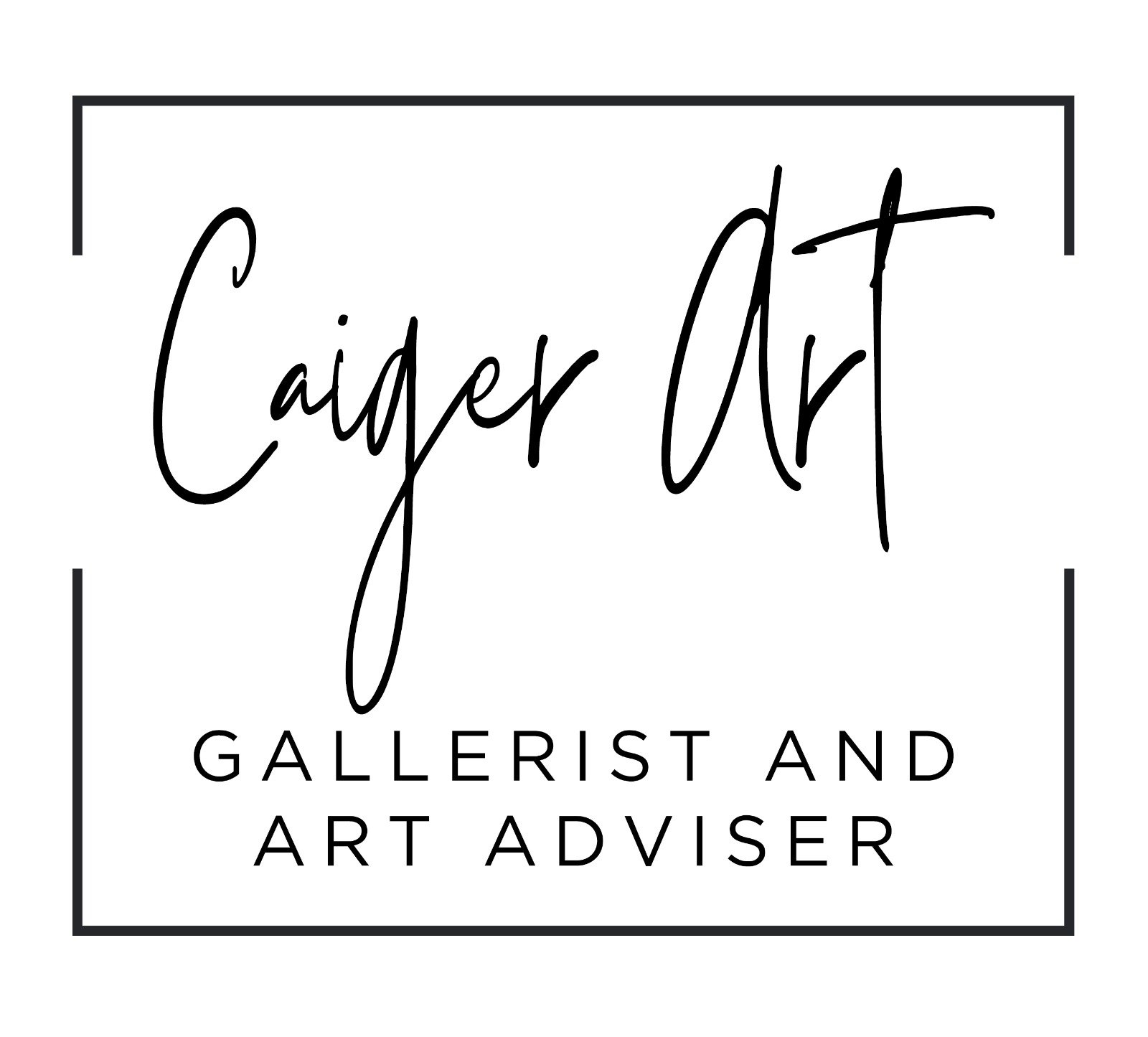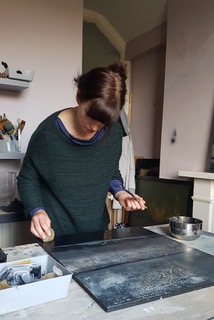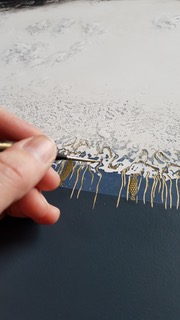Artist In The Spotlight:.....Rachel Newton
Rachel creates works in a variety of media, mainly acrylics, producing atmospheric and deceptively understated pieces often on a large scale.
Using multiple layers of mixed media over an expanse of wooden panel, much of the works signify states of mind. Emerging delicately from that expanse of muted colour are textured details evoking fresh possibilities to challenge the stability of hibernation. Indeed, as is evident in her works that include areas of gold, the overriding sense is one of understated optimism. Inspired partly by Japanese aesthetics, there is a recognition of the beauty of simplicity and unobtrusiveness where the ‘void’ of apparent solid colour becomes a space of potentiality and hope. As usual, our Gallery Director, Carol Caiger, wanted to know more…
Carol: What is the inspiration behind your artwork and how does it relate to your pieces?
Rachel: Materials inspire me. Materials that are designed to create or can be manipulated to create. Materials blended by nature and displayed in the natural world that when observed close up are mesmerising in their detail. Manipulation of materials to create texture excites me. Often also a lack of manipulation of those same materials to allow them to move across the surface in their own unique, never to be repeated way. Its a partnership between myself and the materials.
Strata by Rachel Newton
Carol: When did you know you were going to be an artist?
Rachel: I didn’t until recently. As a teenager I’d spend hours copying pictures of oriental rugs in pencil and watercolour so I guess a need to create has been there for a long time. However, despite nearly all my mother’s side of the family being artists or sculptors I never felt capable artistically. I didn’t do well in art at school and got frustrated that I couldn’t do what the rest of my family seemed to be able to do with ease.
Finally, as my job at a gilders, carvers and restoration company progressed and I developed an appreciation of the traditional materials used in that profession, my need to be creative reemerged.
Later, M.E. and fibromyalgia ‘flattened’ me physically and mentally but there remained the need to create. Having painted my 1st abstract piece, initially purely as art therapy, I liked it enough to live with it on our wall in our flat, and enough other people did too (including a friend who commissioned a piece). Now I can’t imagine doing anything else and I feel incredibly lucky.
Rachel Newton In Her Studio
Carol: What artist inspires you?
Rachel: Tricky question…..so many, most of whom aren’t famous; there’s so much talent out there. Among well known artists, I really connect with Hans Hartung’s approach of experimentation and relinquishing control to create spontaneous, accidental marks. I love some of Antoni Tàpies’s deceptively simple works with muted colours that on closer inspection reveal tantalising depth and detail. Rothko’s treatment of colour to make his blocks ‘glow’ are enviable.
Carol: - How do you start your pieces?
Rachel: I have a vague vision of colours, textures and composition in my head to achieve the mood I’m aiming for. The beginning of the physical process of painting is very methodical; The monotony of priming the wooden panels forces a clearing of the mind to creating space for fleshing out that vague initial vision.
Fertile Ground by Rachel Newton
Carol: Can you tell us about your process?
Rachel: It is an ever evolving process, a journey where the direction is dictated as much by the qualities of the materials as it is by my vision. That partnership between myself and the materials starts with a manipulation to form the 1st underlying texture in paint and gesso. The manipulation, at that stage and subsequent ones involves a variety of tools ( brushes, sponges, scrapers, hands, rags, carving tools, sandpaper…….actually pretty much whatever is needed). Removal of paint layers is equally as important as the application of paint.
Carol: How long does it take to complete a piece?
Rachel: I have a few paintings on the go at once, all within a few stages of each other so I can still get busy on one while others dry, especially the gesso layers which take longer to dry and harden. It also ensures the best use of my time and means less materials are wasted (some of which have a short shelf life). Generally each painting will take between 35 and 50 hours
Rachel Newton Working In Her Studio
Carol: Do you have a typical question that everyone asks you about your work?
Rachel: “What kind of paint do you use”?; “How did you get that effect”?; “Don’t you want to use more colours”? This last one makes me smile because it usually precedes more questions that suggest some people aren’t comfortable with the few muted colours I use. Thankfully though, most people that pass comment find the colour palette aesthetically pleasing and calming. Personally, I find comfort in less colour.
Fertile Ground by Rachel Newton
Carol: What is your studio like and where is it?
Rachel: I paint in a room at home which luckily isn’t used for anything else so I can cocoon myself in there, surrounded by all my materials.
Carol: What do you like doing when you are not creating?
Rachel: I have a very active 8 year old boy who keeps me pretty busy when I’m not working. I enjoy cycling with him and watching the odd kids movie at the cinema. What I appreciate being able to do with the little energy that remains once he’s in bed is simply eating, watching good tv and generally chilling out with my partner. Energy permitting I enjoy socialising with friends.
Illuminating Footprints by Rachel Newton
Carol: What is your perfect weekend?
Rachel: My perfect weekend would be getting active and adventurous in the countryside (preferably abroad) during the day, and spending evenings with lots of good food, drink and music with friends. Its been a while since I’ve had the energy for all of that but I’m hopeful.
Strata by Rachel Newton








